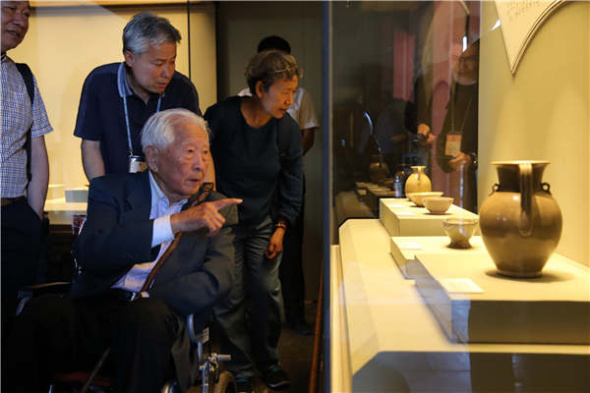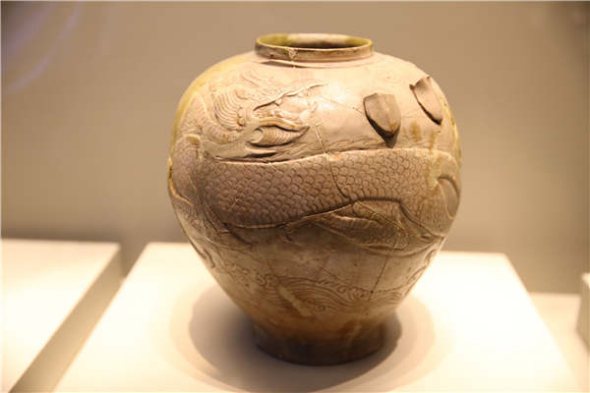
Geng Baochang, 95, one of China's top porcelain experts, visits the ongoing exhibition featuring mise porcelain, which uses a technique that was lost after the late Northern Song Dynasty (960-1127). (Photo provided to China Daily)

(Photo provided to China Daily)
An ongoing exhibition, Mise Porcelain: Impressive Discovery and Mysterious Tribute, at Beijing's Palace Museum, sheds light on items given in tribute to emperors.
For a long time, not many people understood what mise porcelain meant, although the term was encountered frequently in ancient documents dating back over a millennium.
Mise (literally, mystical-colored) porcelain was given in tribute exclusively to emperors from the late Tang (618-907) to early Northern Song (960-1127) dynasties, and it is now on show at a former imperial court.
An ongoing exhibition, Mise Porcelain: Impressive Discovery and Mysterious Tribute, at Beijing's Palace Museum, China's royal palace from 1420 to 1911, which is also known as the Forbidden City, showcases these treasures and focuses on the relevant archaeological discoveries.
Thirteen mise porcelain articles were unearthed in 1987 from an underground altar of the Famen Buddhist Temple in Baoji, Shaanxi province.
The world mise was carved on a stele, which was the inventory of the altar items.
While the origin of this kind of porcelain remains unclear, the discovery of ancient porcelain kilns in Shanglinhu, Zhejiang province in 2016 proved that it was a mise porcelain production hub.
The exhibition at the Palace Museum has 187 items, 120 of which are from Shanglinhu.
The rest are from other sites, including the Famen Temple.
According to Wang Yamin, deputy director of the Palace Museum, the display also marks the 30th anniversary of the Famen Temple find.
"Mise porcelain, fired in the Yue Kiln in Zhejiang represents the quality and aesthetics of Chinese ceramic production from the ninth to the 11th centuries," says Wang.
Meanwhile, Shen Yueming, a researcher at the Archaeology Institute of Zhejiang Province, says that materials used to make mise porcelain were different from those used for ordinary celadon made in the Yue Kiln.
"It (mise porcelain) is more delicate and the colors are purer," he says.
Referring to their rarity, he says: "In historical documents, we found that even though rich people gave tens of thousands of Yue Kiln celadon articles as tributes to royal courts, there were fewer than 200 mise porcelain articles among them."


















































